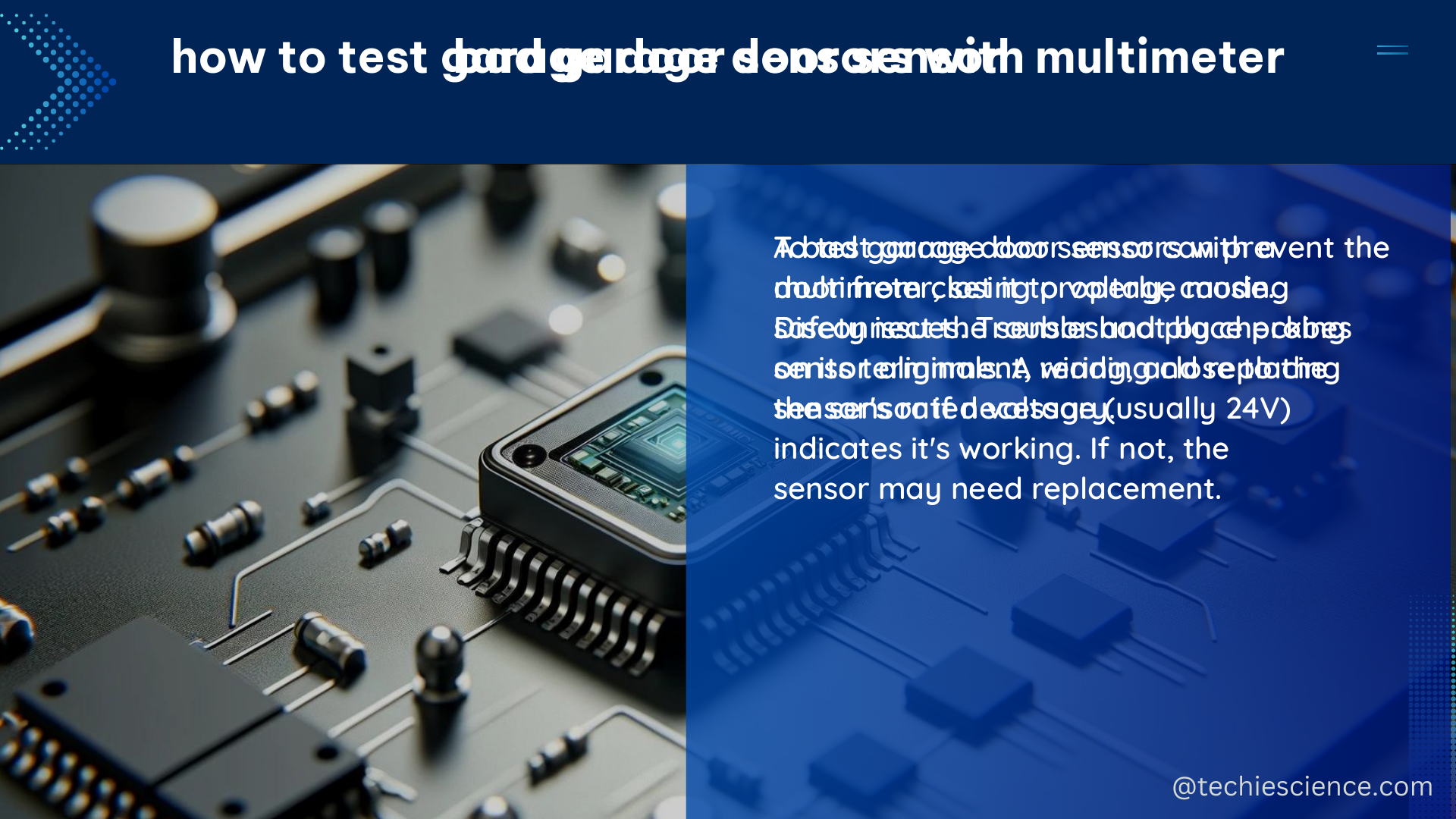A bad garage door sensor can manifest in various ways, such as the garage door not closing, the MyQ app indicating misaligned sensors when they are not, or the door opener failing to respond. To diagnose and address this issue, consider the following quantifiable data and advanced details.
Voltage Testing
Using a multimeter to test the voltage put out by the opener is a crucial first step. The expected voltage range for most garage door openers is 11-24V DC. If the voltage is not within this range, it could indicate a problem with the opener itself.
- Measure the voltage at the sensor terminals on the opener. The voltage should be within the 11-24V DC range.
- If the voltage is outside this range, the opener may need to be replaced or repaired.
- Ensure that the power supply to the opener is stable and not fluctuating, as this can also cause issues with the sensor.
Wiring Check

Checking the wiring connections between the sensors and the opener is essential. Disconnect all wires at both ends, cut off any exposed conductor, strip the wires fresh, and reconnect them. This process helps eliminate any potential issues caused by corrosion or loose connections.
- Inspect the wiring for any signs of damage, such as fraying, cuts, or kinks.
- Clean any corroded terminals using a wire brush or sandpaper to ensure a clean, secure connection.
- Ensure that the wires are firmly connected to the sensor terminals and the opener terminals.
- Consider using wire nuts or crimp connectors to secure the connections and prevent future issues.
Wire Replacement
Upgrading the solid 20 or 22-gauge wire that comes with most openers to stranded wire can improve durability and minimize intermittent problems.
- Stranded wire is more flexible and less prone to breaking or developing issues over time.
- Use a wire gauge that is compatible with your specific garage door opener model, typically 18-22 AWG.
- When replacing the wires, ensure that the new wires are the same length as the original ones to avoid any slack or tension in the connections.
Sensor Alignment
Proper alignment of the garage door sensors is crucial for their proper functioning. Adjust the sensors so they point directly at each other, and bending the brackets slightly may be necessary for optimal alignment.
- Use a laser pointer or a straight edge to ensure that the sensors are perfectly aligned and facing each other.
- Adjust the sensor brackets by bending them slightly until the sensors are perfectly aligned.
- Ensure that there are no obstructions or objects blocking the sensor’s line of sight.
- Check the sensor’s LED indicators to confirm that they are properly aligned and receiving a signal from each other.
Technical Specifications
For advanced users, understanding the wiring diagram and component operation can help diagnose and address issues. Knowing how the sensors work and how to determine if the problem is wiring, component, or aiming related can be invaluable.
- Review the manufacturer’s wiring diagram and technical specifications for your specific garage door opener model.
- Familiarize yourself with the sensor’s operation, including the LED indicators and their meaning.
- Understand the sensor’s power requirements and how to test the voltage and current at the sensor terminals.
- Learn how to troubleshoot sensor-related issues, such as determining if the problem is with the wiring, the sensor itself, or the alignment.
By following these steps and using the appropriate tools, you can diagnose and fix a bad garage door sensor. Remember to always prioritize safety and consult a professional if you are unsure or uncomfortable with any of the procedures.
Reference:
- MyQ App Says Misaligned Sensors, But the Sensors Are Aligned
- How Garage Door Sensors Work and How to Troubleshoot Them
- What Might Cause Garage Door Opener Sensors to Work Intermittently?

The lambdageeks.com Core SME Team is a group of experienced subject matter experts from diverse scientific and technical fields including Physics, Chemistry, Technology,Electronics & Electrical Engineering, Automotive, Mechanical Engineering. Our team collaborates to create high-quality, well-researched articles on a wide range of science and technology topics for the lambdageeks.com website.
All Our Senior SME are having more than 7 Years of experience in the respective fields . They are either Working Industry Professionals or assocaited With different Universities. Refer Our Authors Page to get to know About our Core SMEs.